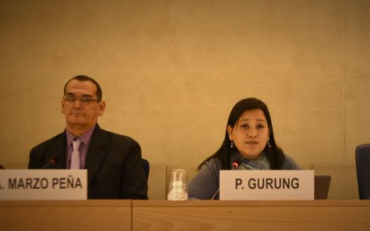IDA was invited to support UN Women to contribute to the design, development, and testing of the Intersectionality Resource and Guide Toolkit: An Intersectional Approach to Leave No One Behind following an intersectional approach and promoting the leadership of and accountability towards the diversity of persons with disabilities. The purpose was also to guarantee that the final toolkit would be fully informed by the realities and priorities of people who experience intersecting and multiple forms of discrimination, including persons with disabilities.

The disability rights movement, like other social movements, is far from homogenous. This is why the Convention on the Rights of Persons with Disabilities underscores the vast diversity of persons with disabilities, emphasizing its concern for those whose ethnicity, gender, socioeconomic position, or other aspects of their identity make them vulnerable to multiple or aggravated forms of discrimination.
The interaction between different factors of stigma and discrimination has been defined as intersectionality, a term proposed in 1989 by race scholar Kimberlé Crenshaw. In her paper Demarginalizing the Intersection of Race and Sex: A Black Feminist Critique of Antidiscrimination Doctrine, Feminist Theory and Antiracist Politics, Crenshaw described intersectionality as a lens for seeing the way in which various forms of inequality often operate together and exacerbate each other. This is an approach that persons with disabilities have found deep resonance with, because the barriers they experience are often dependent on the social privileges they are afforded by their identities.
Intersectionalities at IDA’s work
IDA has developed an Intersectionalities strategy to support underrepresented groups and their organizations in building their capacities for full and effective participation. The primary groups identified for this work include youth, older and indigenous persons with disabilities, persons with psychosocial and intellectual disabilities, as well as persons with deafblindness as they are the most vulnerable to intersectional forms of discrimination.
This work is housed in the Capacity Building Unit of IDA, and consists mainly of two approaches: Including underrepresented groups across all Bridge trainings, and specific trainings on intersectionalities.
- Inclusion of underrepresented groups across all Bridge trainings: The Bridge CRPD-SDGs Quality Criteria mandates that 40% of participants in the program’s trainings must be persons with disabilities from groups generally underrepresented in decision making processes. These underrepresented groups include persons who are deafblind, persons with intellectual and psychosocial disabilities, and autistic people. Sometimes, these groups can also include women, children, older people and indigenous persons, as well as faith, ethnicity, caste, class, sexual orientation or gender identity minorities. The identities that make people more vulnerable to discrimination are different in different countries and contexts. Other trainings organized by IDA and its members are also increasingly adhering to this standard.
- Specific trainings for Intersectionalities: IDA has also supported the organization of specific workshops to build the capacity of persons whose identities make them more vulnerable to these intersectional forms of discrimination. Workshops for women with disabilities, indigenous persons with disabilities; for indigenous women with disabilities, as well as for persons with intellectual and psychosocial disabilities, and with deafblindness have been conducted as part of this strategy.
To learn more about these approaches, and IDA’s work on intersectional forms of discrimination, please contact Rosario Galarza, at: rgalarza [at] ida-secretariat.org



